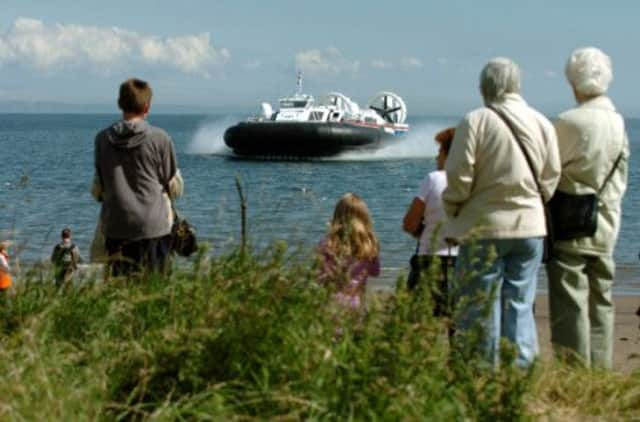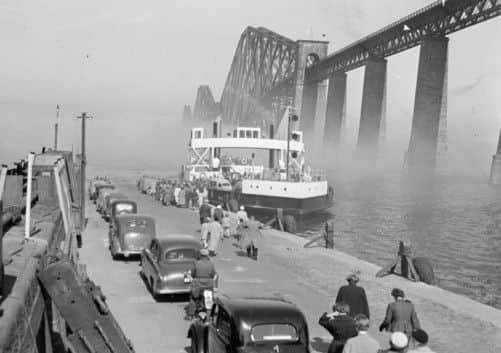Comment: Firth transport links need exploited


The Forth Estuary is south-east Scotland’s maritime highway. Together with Edinburgh airport, it is pivotal to our transport and trade with the outside world.
Historically the Forth has been at the heart of the region’s transport and commerce. Its ports and harbours were home to a booming maritime trade with Northern Europe, and a thriving fishing industry.
Advertisement
Hide AdAdvertisement
Hide AdYet today the Forth has declined. Its smaller ports largely stand idle. No ferries ply the crossing between Fife and the Lothians. Cruise liners still dock at Rosyth and Leith and container ships and oil-related maritime traffic ply their way from Grangemouth and Rosyth. But only a single ro-ro freight ferry service – Scotland’s only direct sea link to mainland Europe – runs out of Rosyth. Holidaymakers must travel south of the Border to access passenger ferry services to Europe.


SEStran believes that the Forth can, and should, be restored to its rightful place as south-east Scotland’s gateway to Europe and the world – and link communities in Fife and the Lothians.
The Forth has great potential
As the defining natural feature of our region the Forth has great potential to be a transportation asset and should not be left to stand idle, or treated as a barrier to be overcome.
SEStran supports the building of the new road-crossing to supplement the existing bridges across the Forth, with the proviso that it should prioritise multimodal public transport. But a bridge, while useful, isn’t enough in itself. We need to maximise use of waterborne transportation on the Forth; and there are many possibilities for innovation.
In 2007, SEStran in partnership with Stagecoach, held a trial hovercraft foot passenger service from Kirkcaldy to Edinburgh, offering an 18-minute journey from Kirkcaldy to Portobello; a major improvement on driving the length of Fife and crossing the Forth Bridge to get to the capital, and faster than the existing rail link.
The project was a huge success, with passengers queuing around the block. Infrastructure for a permanent service would have been modest and, potentially, hundreds of cars would be taken off the regions roads.
There is also the potential for another possible foot passenger ferry service from Burntisland to Granton. Several other sites on either bank of the Forth may also offer similar future possibilities, but to date the estuary stands unused for water-borne passenger transport.
In addition, transferring road freight to water as quickly as possible can help reduce the region’s carbon footprint, cut road miles and reduce traffic congestion, by removing the need to travel further south to access ferry services while still getting goods to market in a timely and effective manner.
Advertisement
Hide AdAdvertisement
Hide AdThis service is an asset the importance of which cannot be overstated, but it is not currently used to capacity. SEStran believes that this unique service must be exploited to the full.
Sustainable solutions
In partnership with our European colleagues – who share our view of the importance of the service – we have so far held two events to encourage businesses to make greater use of this resource on their doorstep.
Water transport offers a range of sustainable solutions to our region’s transportation problems, and the Forth estuary is their natural focus.
SEStran is currently involved in several EU-backed projects that seek to find innovative ways to transfer freight off-road and onto such sustainable modes.
Prominent among these is WEASTflows; a £9 million EU match-funded project that aims to encourage a move from an over-reliance on road haulage to more sustainable modes including rail, short-sea shipping and river transportation.
Lo-Pinod focuses on encouraging greater use of under-utilised local ports to re-balance Europe’s transport network, reduce road congestion, aid regional development and deliver more freight by sustainable sea transport.
I-transfer aims to increase commuting by water through improving water-borne public transport systems in Europe’s North Sea Region, using innovative and sustainable ferry technology.
As part of this project, SEStran is supporting a tourist-related ferry service which will operate from North Berwick to the Bass Rock, Isle of May and across the Forth to Anstruther. The new vessel for this service will also trial bio-diesel fuel using recycled waste oils,
Advertisement
Hide AdAdvertisement
Hide AdThe Forth is ideally suited to maximising the benefits all these projects have to offer. Its existing harbour infrastructure stands ready to be brought back into service, transforming the estuary from an underused resource into a bustling thoroughfare; reducing regional traffic congestion; enhancing the quality of life of our citizens and supporting local and international commerce.
Sustainable water transport on the Forth is key to solving many of the transportation problems that south-east Scotland faces. Its only limitations are those which we impose upon it with our lack of vision.
• Russell Imrie is chair of SEStran